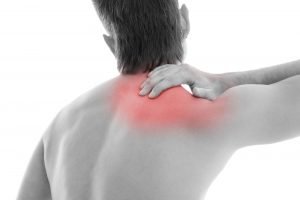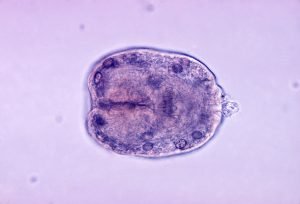Summary
A liver cyst is a sac-like structure in the liver that contains fluid, such as air or liquid. In some cases, liver cysts can also have solid material inside. People with liver cysts may experience symptoms such as pain in the upper right side of the abdomen, abdominal swelling, bloating, heartburn, nausea or vomiting, and even pain in the shoulders.
The exact cause of liver cysts is not yet fully understood by doctors. However, it is believed that some liver cysts may be hereditary, meaning a person could be born with them. Another theory suggests that aging, along with poor diet and unhealthy lifestyle habits, can contribute to the formation of liver cysts. Over time, liver cells may become filled with fat, which can result in the death of some cells and the formation of cysts. Additionally, liver cysts may also develop from parasitic infections. Parasites like Echinococcus granulosus can enter the body, lay eggs in the liver, and form cyst-like capsules.
According to doctors, most liver cysts are benign and not a cause for concern, especially if they are few and small. These cysts are usually non-cancerous and typically do not interfere with the liver’s normal function. However, if the cysts are large or numerous, they can cause discomfort or pain, and surgery may be necessary. If parasitic infections are the cause, the patient may be prescribed antihelmintic medications to eliminate the parasites.
In summary, while liver cysts are usually harmless, medical evaluation is important to determine the appropriate treatment, especially in cases where cysts cause significant symptoms or are associated with infections.
Table of Contents
Symptoms of Liver Cyst

In many cases, people with liver cysts do not experience noticeable symptoms, especially if the cysts are small or few in number. However, when symptoms do occur, they can indicate that the cysts are growing or becoming problematic. Here are some common symptoms associated with liver cysts:
- Pain in the upper right abdomen. This is the most common symptom, typically felt under the right ribcage where the liver is located.
- Abdominal enlargement, swelling, or bulging. As cysts grow in size or number, they can cause visible or noticeable swelling in the abdomen.
- Bloating or a feeling of fullness. People with liver cysts may often feel bloated or overly full, even after eating small amounts of food.
- Heartburn or acid reflux. The pressure from an enlarged liver or cysts can push stomach contents back into the esophagus, leading to heartburn or acid reflux.
- Nausea or vomiting. Digestive discomfort, including nausea or vomiting, can result from pressure on the stomach or nearby organs.
- Shoulder pain. In some cases, pain from liver cysts may radiate to the shoulders due to referred pain, where the liver’s discomfort is felt elsewhere in the body.
If you experience any of these symptoms, particularly if they are persistent or worsening, it’s important to consult a healthcare professional for proper diagnosis and management. While liver cysts are often benign, large or symptomatic cysts may require treatment.
Types of Liver Cysts
Liver cysts can take various forms, each with different causes, characteristics, and potential health implications. While many liver cysts are benign and do not require treatment, some types may cause symptoms or lead to complications that require medical intervention. Understanding the different types of liver cysts is important for proper diagnosis and management.
- Simple Cysts. The most common type of liver cyst, consisting of fluid-filled sacs. These are typically benign and often do not cause symptoms unless they grow large enough to cause discomfort.
- Polycystic Liver Disease (PLD). A genetic condition where multiple cysts form throughout the liver, often associated with polycystic kidney disease (PKD). Severe cases can cause liver enlargement and impaired liver function.
- Hydatid Cysts. Caused by infection from the parasitic tapeworm Echinococcus granulosus. These cysts can lead to pain, nausea, and complications if they rupture, requiring prompt medical attention.
- Cystadenomas and Cystadenocarcinomas. Rare cysts that develop in the bile ducts. Cystadenomas are benign, while cystadenocarcinomas are malignant. Both may cause abdominal pain and jaundice and often require surgical removal.
- Biliary Cysts (Choledochal Cysts). Cysts in the bile ducts that can obstruct bile flow, leading to jaundice, infections, or even bile duct cancer. They are usually congenital and may necessitate surgery.
- Liver Abscess. A pus-filled cavity caused by bacterial or parasitic infections. Though not a true cyst, a liver abscess can lead to severe symptoms such as fever and abdominal pain and requires immediate treatment.
- Caroli’s Disease. A rare congenital disorder where the bile ducts inside the liver enlarge, forming bile-filled cysts. It can cause recurrent infections and may result in liver damage if not managed.
While most liver cysts are benign and asymptomatic, certain types can cause significant discomfort or lead to more serious conditions, including infections or cancer. Early detection and appropriate treatment are key in managing liver cysts, especially if they begin to cause symptoms or complications.
Diagnostic Procedures for Liver Cyst
Diagnosing liver cysts often requires a combination of imaging tests and medical evaluations to assess their size, type, and potential risk. While many liver cysts are benign and asymptomatic, diagnostic procedures are essential for identifying those that may require treatment.
- Ultrasound. This is the most common diagnostic tool for detecting liver cysts. It uses sound waves to create images of the liver, allowing doctors to assess the size, number, and structure of the cysts.
- CT Scan. A CT scan provides detailed cross-sectional images of the liver, helping to identify more complex cysts or those that may have solid components, which could indicate a higher risk of complications.
- MRI (Magnetic Resonance Imaging). MRI offers a highly detailed view of liver tissues and cysts, making it useful for distinguishing between benign and potentially cancerous cysts.
- Blood Tests. Although blood tests cannot directly detect liver cysts, they can help assess liver function and detect any signs of infection, inflammation, or parasitic infections associated with cysts.
- Biopsy. In cases where the cyst appears suspicious, a liver biopsy may be performed. A small sample of tissue from the cyst is taken and examined under a microscope to check for signs of malignancy or infection.
- Hydatid Serology Tests. If a parasitic infection like hydatid disease is suspected, blood tests to check for antibodies against the Echinococcus parasite may be performed. This helps confirm whether a parasitic cyst is present.
These diagnostic procedures help doctors determine the type of liver cyst and guide the appropriate treatment plan. In many cases, simple cysts do not require any treatment beyond regular monitoring, but more complex or symptomatic cysts may need further intervention. Early detection through imaging and blood work is key to preventing potential complications.
Complications of Untreated Liver Cyst
While most liver cysts are benign and asymptomatic, leaving them untreated, especially if they grow larger or become infected, can lead to significant complications. Monitoring and timely intervention are crucial to prevent the following issues:
- Cyst Rupture. Large cysts are at risk of rupturing, which can lead to severe pain, internal bleeding, or infection. A ruptured cyst may require emergency medical attention and, in some cases, surgery.
- Infection. In rare cases, liver cysts can become infected, causing fever, chills, and abdominal pain. Infected cysts, such as liver abscesses, can spread bacteria throughout the body and become life-threatening if not treated.
- Biliary Obstruction. Cysts located near the bile ducts can block the flow of bile, leading to jaundice (yellowing of the skin and eyes), digestive issues, and inflammation of the bile ducts (cholangitis). This can result in further liver damage if left untreated.
- Hydatid Cyst Complications. In cases of hydatid cysts caused by parasitic infections, the cysts can grow large and compress surrounding organs. If the cyst ruptures, it can release parasitic material into the body, potentially causing a severe allergic reaction or anaphylaxis.
- Liver Damage. Although rare, very large cysts can displace liver tissue or cause liver dysfunction, affecting the organ’s ability to perform essential functions, such as detoxification and bile production.
- Malignant Transformation. Although most liver cysts are benign, certain types, such as cystadenomas, have the potential to become cancerous (cystadenocarcinoma) if left untreated. This can lead to more serious health risks, including the spread of cancer to other parts of the body.
Early diagnosis and monitoring of liver cysts can prevent these complications. While many cysts do not require treatment, larger or symptomatic cysts should be evaluated regularly to avoid serious health risks. In cases where complications arise, medical or surgical intervention may be necessary to manage the condition effectively.
Causes of Liver Cyst

The exact cause of liver cysts is still not fully understood, but doctors believe they may form when some liver cells die or when there are problems with the bile ducts, which play a crucial role in metabolism. In addition to these general causes, liver cysts can also develop due to several other factors:
- Inherited genetic factors. Liver cysts often run in families, meaning the risk of developing them can be inherited. If certain family members have had liver cysts, there is a higher chance of others developing them as well. Several genetic liver conditions can lead to cyst formation, including hepatic fibrosis, polycystic liver disease, choledochal cyst disease, bile duct cystadenoma, and Caroli disease. These inherited conditions can cause abnormalities in the bile ducts or liver tissues, leading to cyst formation.
- Aging and unhealthy lifestyle habits. Aging is another common factor linked to liver cysts, as the liver may accumulate damage over time. Unhealthy habits, such as excessive alcohol consumption, smoking, exposure to toxic chemicals, improper use of medications, and a diet high in fatty foods, can increase the risk of liver cysts. These behaviors can lead to liver cell damage, resulting in the formation of cysts.
- Exposure to parasites. Certain parasitic infections can also cause liver cysts. One example is the Echinococcus granulosus tapeworm, which is commonly found in livestock such as cattle and sheep. When humans consume food or water contaminated with the parasite, it can enter the liver and form hydatid cysts. These parasitic cysts can grow and cause complications if left untreated.
While most liver cysts are benign, understanding the possible causes—whether inherited, lifestyle-related, or due to infections—is important for prevention and early detection. Maintaining a healthy lifestyle and seeking timely medical evaluation can help manage the risk of developing liver cysts or prevent potential complications from occurring.
Prevention of Liver Cyst

While liver cysts are often hereditary and may not always be preventable, there are several steps you can take to maintain a healthy liver and reduce the risk of complications:
- Limit alcohol consumption and quit smoking. Excessive alcohol and smoking can cause liver damage, leading to scarring and increasing the risk of cyst formation. Avoiding these harmful substances can help protect liver health.
- Maintain a balanced and nutritious diet. Choose healthy, nutrient-rich foods and avoid high-fat, greasy meals. A well-balanced diet supports liver function and reduces the risk of liver diseases, including the formation of cysts.
- Exercise regularly. Staying active helps maintain a healthy weight and prevents fat accumulation in the liver, which can reduce the risk of conditions like fatty liver disease that may lead to cysts.
- Follow medication guidelines. If you are taking medications for any health condition, make sure to follow the prescribed dosage and avoid overuse. Taking too much medication can strain the liver and cause damage over time.
- Avoid inhaling harmful chemicals. When using insecticides, aerosols, or other chemical products, cover your nose and mouth to prevent inhaling toxic substances. Prolonged exposure to these chemicals can harm the liver and increase the risk of cyst formation.
- Seek medical advice if experiencing symptoms. If you feel pain or discomfort in the upper right abdomen, it’s important to consult a doctor. While liver cysts are often benign, early diagnosis and treatment are key to managing any potential liver issues. If diagnosed with a liver cyst, follow your doctor’s recommendations and monitor the condition closely.
Maintaining a healthy lifestyle and taking preventive measures can help support liver health and reduce the likelihood of liver cyst complications. Regular check-ups and a proactive approach to liver care are essential for long-term well-being.
Risk Factors for Liver Cyst

Liver cysts can develop in anyone, but certain factors may increase the likelihood of their occurrence. Here are some of the key risk factors:
- Family history of liver disease. Several liver conditions that can lead to the formation of cysts are hereditary. If liver diseases such as hepatic fibrosis, polycystic liver disease, choledochal cyst disease, bile duct cystadenoma, or Caroli disease run in your family, you are at a higher risk of developing liver cysts.
- Aging and unhealthy lifestyle. As people age, their organs, including the liver, become less efficient. Over time, unhealthy habits such as poor diet, smoking, and a sedentary lifestyle can contribute to the accumulation of fat, scars, or minor injuries in the liver, increasing the risk of cyst formation.
- Excessive alcohol consumption. Drinking too much alcohol can damage liver cells and increase the risk of liver cysts. Alcohol contains substances that are toxic to the liver, leading to scarring and other liver complications that can encourage cyst growth.
- Handling livestock, particularly cattle and sheep. People who work closely with livestock are at higher risk of exposure to the parasite Echinococcus granulosus, which can cause hydatid cysts in the liver. Eating food contaminated by this parasite can also lead to liver cysts.
Understanding these risk factors can help individuals take preventive measures to protect their liver health and reduce the risk of developing cysts. Regular check-ups and a healthy lifestyle are essential for minimizing these risks.
Liver Cyst FAQs
Here are some frequently asked questions about liver cysts to help clarify their causes, symptoms, and treatment options:
- What is a liver cyst?
A liver cyst is a fluid-filled sac that forms in the liver. Most liver cysts are benign (non-cancerous) and don’t cause symptoms, but larger or multiple cysts may lead to discomfort or complications. - What causes liver cysts?
The exact cause of liver cysts is often unclear. Some are congenital (present from birth), while others may be linked to parasitic infections, aging, or hereditary liver conditions. Factors like family history, excessive alcohol use, and exposure to parasites can increase the risk. - What are the symptoms of liver cysts?
Many people with liver cysts experience no symptoms. However, if cysts grow large or are numerous, they may cause pain in the upper right abdomen, bloating, nausea, or a feeling of fullness. In rare cases, liver cysts may cause jaundice or shoulder pain. - Are liver cysts dangerous?
Most liver cysts are harmless and do not require treatment. However, larger cysts can cause complications, such as pain or pressure on nearby organs. In rare cases, some cysts may become infected or even rupture, requiring medical attention. - Can liver cysts become cancerous?
While the majority of liver cysts are benign, certain types—such as cystadenomas—have the potential to become malignant (cancerous). Regular monitoring of suspicious cysts can help detect changes early and prevent complications. - How are liver cysts diagnosed?
Liver cysts are typically diagnosed through imaging tests such as ultrasound, CT scans, or MRI. These tests can reveal the size, location, and type of cyst, helping doctors determine if any further action is necessary. - What is the treatment for liver cysts?
Most liver cysts do not require treatment unless they are causing symptoms or complications. In such cases, treatments may include draining the cyst, surgical removal, or treating any underlying infection. Anti-parasitic medications may be used for cysts caused by parasitic infections. - Can liver cysts go away on their own?
In many cases, liver cysts remain stable and do not grow or cause symptoms, so they may not need treatment. However, if a cyst becomes problematic, it will likely require medical intervention rather than resolving on its own. - Can liver cysts be prevented?
While hereditary factors or congenital liver cysts cannot be prevented, maintaining a healthy lifestyle—limiting alcohol intake, avoiding exposure to harmful chemicals, and eating a balanced diet—can help reduce liver damage and the likelihood of cyst formation. - When should I see a doctor about liver cysts?
If you experience symptoms like persistent pain in the upper right abdomen, bloating, nausea, or unexplained weight loss, it’s important to seek medical advice. Even though most liver cysts are harmless, early evaluation can help prevent potential complications.


